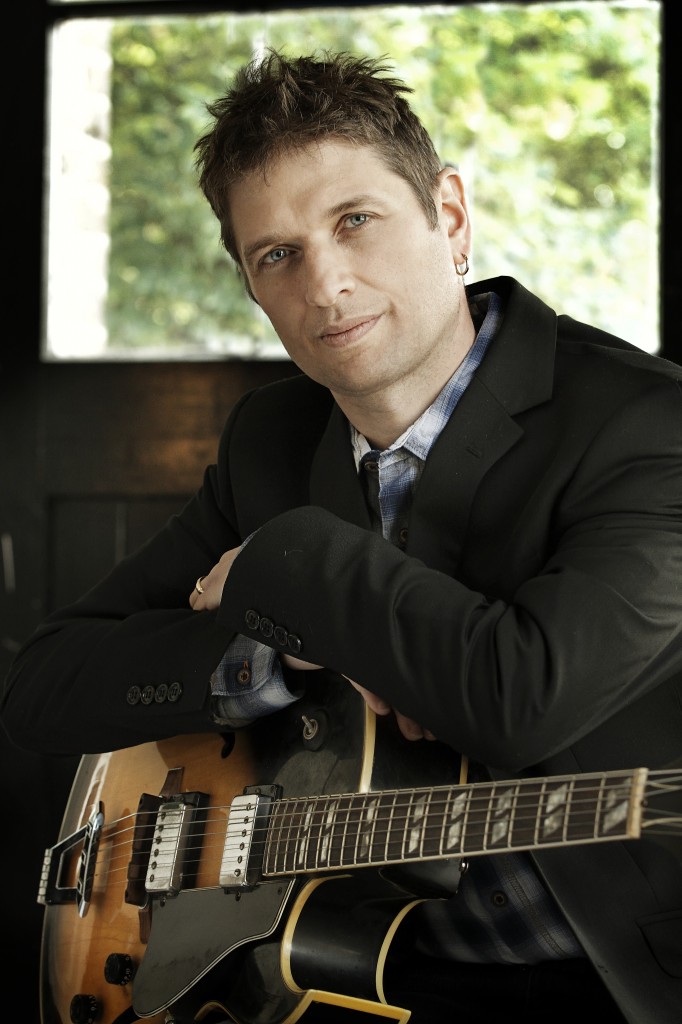LATEST NEWS
Milton Mermikides is a composer, lecturer, writer, academic, producer, electronic musician, illustrator and guitarist from London, UK. He also is embarrassed to talk about himself in the 3rd person, but he’s already started now so here we are.
He is the 37th Gresham Professor of Music, an Associate Professor in Music at University of Surrey, Professor of Jazz Guitar at the Royal College of Music, Professor of Research at the Guildhall School of Music & Drama, Senior Research Fellow and Composer in Residence at the Centre of Eudaimonia and Human Flourishing (Linacre College, Oxford University), an Ableton Certified Trainer, and Deputy Director of the International Guitar Research Centre.
A full CV, overview of research/compositional areas, learning resources, contact enquiries and latest news are all available here, menus and search bars should help with all else. Wikipedia
Qualifications:
PhD (Composition) from University of Surrey
BMus (Performance & Composition) from Berklee College of Music
BSc (Analytical & Descriptive Economics) from London School of Economics
Disqualifications:
Judged the final of the 2006 World Air Guitar Championships
Attempted to open front door with an Oyster card.
Still really needs to fix that drawer


17 replies on “Welcome”
Thanks for taking the time to write your “Hertz so Good” article. It has helped shutting up a few conspiracy nuts on my facebook feed.
Also, many other interesting reads on your site. Keep up the good work!
The funny thing about 432hz imo is that if its a semitone with a slight off bit in terms of cents one could as easy tune 440 that same amount and get the same effect. Its a pointreference. The 432 advocates like the tuning origo to be slightly off ab, and they would still be playing slightly off A440. 🙂
Ty for the good read! The comment section was the funny part! 🙂
And since the sun is a growing object we would need to calibrate the 342 accordingly! 🙂
Hi from Cambridge . I was thinking about a harmony flow chart yesterday and woke up and found yours. My thought included a timeline to show which composers favored certain patterns, like Fritz Loewe’s propensity for leaving his bridges on III#5 (If Ever I Would
leave You, How to Handle a Woman, On the Street Where You Live). Or how historically we move from drones to atonality but now we’ve come full circle in serious Western music with prizewinning pieces that are completely tonal. Thanks for your inspiration
That would be awesome. Music history is nothing like that convenient linear expansion of ‘complexity’ but it would make for a fascinating exercise. (Check out Hook Tools for a valiant effort with pop music). I will do my bit given time.
I know it is an old comment, but I swallowed the hook and went on searching for “hook tools”. All I found were weird DIY wall drills. What am I missing?
Here you go: https://www.hooktheory.com
Good morning sir,
I have discover your Tintinnabulator. I am a real fan of Arvo Part but I don’t know how to use it on my PC(windows). Would you help me ? Must I have an apply or something else to read it ?
Thanks for helping me,
Gwenaël
Hello, I came across your wonderful lecture on Arvo Part initially so have been exploring further your videos. I just watched your TED talk. I like your sense of experimentation and attitude that music pervades everything and everything can be the inspiration for music. This past year I have been making rubbings of tree bark and converting the markings into notation. To date I have made rubbings of 7 trees, including two different cherry trees, and after initially transcribing the pieces for a small ensemble I recently orchestrated and compiled them together. The thought occurred to me that we can identify trees from their leaves, their fruit and bark so why not from rubbings of the bark’s texture. If you are interested these pieces can be heard on my YT channel.
Kind regards
Andrew
Hi,
https://www.youtube.com/watch?v=1XTrfLc7xbA so great! the Porgy and Bess at 23:26 min in you demonstrate using the Melo Rhythmic divorce 1.1. What software did you use to create this? Ive been working with the Schillinger tonal expansions with amazing results and want to test these ideas at the next level. Melody Rhythm dynamics and instrumentation.
Cheers!
David
Greetings from Mexico. I really enjoyed your article on Allan Hodsworth.
Thank you very much for your article
Gracias! Much appreciated!
Good day, Milton.
I came across your work through your wife. I recently viewed her YouTube video on the “Moonlight Sonata”. The arrangement and performance is very excellent and her work made me feel this piece was accessible for me to play.
I now own her book on the that transcription, as of today. I hope to add that and other pieces to my repertoire.
When I viewed the acknowledgement page, I notice your name and thought, “Is this a husband and wife musical duo?”. I then found your website and YouTube page and was blown away by your work as well.
You two are indeed a dynamic duo and I am benefitting greatly from both of your work.
I look forward to continuing to glean from your creating partnership.
Greatest of wishes to you and your family,
Jason
I am LOVING The Nature of Music series of Gresham 2023 Lectures. I’ve never heard such a huge range of musical examples from all over the world brought together in a single forum to illustrate the how, what and why of music. It’s absolutely brilliant. The presentation of difficult concepts is so very well done. Thank you. Very much looking forward to No. 3 in the series.
Your “The Art and Science of Tuning” available on YT is awesome !
Thank you for sharing with us such knowledge and deep love of music.
Thank you so much!
Hi Milton.
My name is Graeme. I’m a PhD student in Cybernetics at the ANU in Canberra, Australia. (Currently on hiatus.) I am also an autodidactic guitarist… hell… I am autodidactic in most of the domains where I am considered to have some kind of knowledge or expertise… generally a sophisticated form of philosophical and cybernetic omphaloskepsis. 😀
Anyway… I saw your Gresham lectures recently. Fantastic. You have reinvigorated my interest in music theory. Brilliant lectures. A survey, certainly, but some of the deeper principles and mathematical patterns are clearly non-trivial… really fascinating stuff.
Also, and FWIW, I found this yesterday and immediately thought of your explanations of the harmonic series… you might find this interesting.
https://www.youtube.com/watch?v=RCIz2hdJQy0
regards,
Graeme.
p.s. I also shared your lectures with a friend who is am musician and his response was much the same as mine. Great work!
p.p.s – in the video… abstract away the maths, the complexity… consider the floating point of particular elasticity… it is very much like the wanderying barycenter of tonal gravity that classical pursues and jazz improvisationally inhabits.